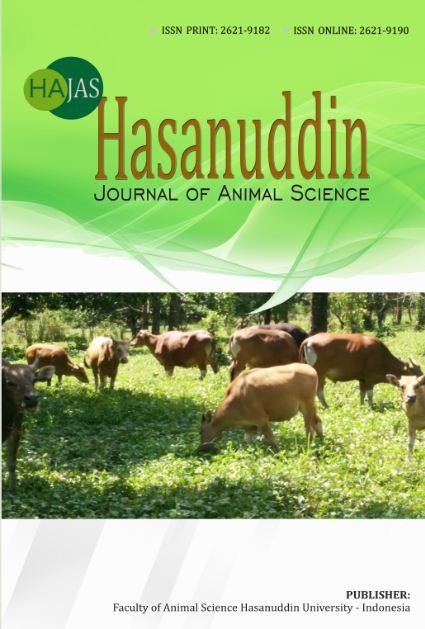Potential for Developing Liquid Organic Fertilizer from Agricultural, Plantation, and Livestock Waste through Ecodesign
DOI:
https://doi.org/10.20956/hajas.v6i2.40596Abstract
This study aims to evaluate the potential of organic liquid fertilizers (LOF) derived from agricultural, plantation, and animal waste in Mamuju Tengah District, employing an ecodesign approach. The LOF materials used were goat urine, palm fruit leaf, rice straw, and corn straw. The research methodology employed was a randomized complete block design with four LOF treatment doses: a control (K), 10 ml, 20 ml, and 30 ml per liter of water. Each treatment was replicated four times and applied to two plant species: elephant grass (Pennisetum purpureum) and the legume Indigofera. The parameters observed included plant height, number of tillers, chlorophyll content, and the number of nodules on the roots of the plants. The study results indicate that LOF does not significantly affect plant height in either test species. However, a significant effect was observed on increased chlorophyll content and the number of nodules in the Indigofera plants. Furthermore, the application of LOF resulted in a notable impact on the number of seedlings and chlorophyll content in elephant grass. The findings of this study indicate that LOF, derived from agricultural, plantation, and animal by-products, benefits specific growth parameters, particularly chlorophyll and nodules. This suggests that LOF has the potential to serve as an environmentally friendly fertilizer in sustainable agricultural systems.
Keywords: Organic liquid fertilizer, goat urine, palm leaf, plant growth, ecodesign
Downloads
Published
Issue
Section
License

This work is licensed under a Creative Commons Attribution-NonCommercial 4.0 International License.











